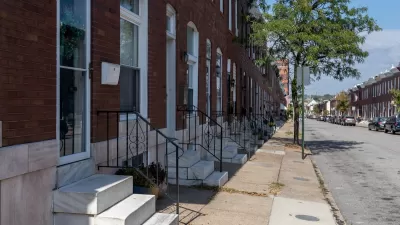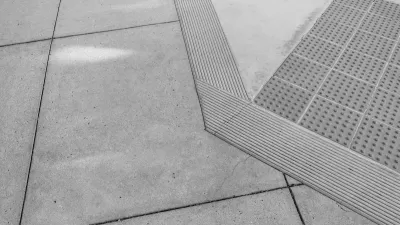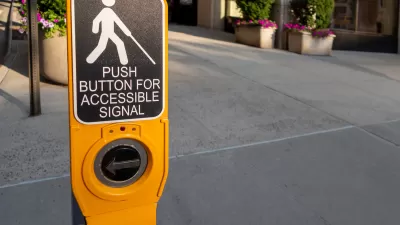Under the new rule, state and local governments would be required to adhere to a specific set of accessibility guidelines when designing, constructing, or altering pedestrian facilities in the public right-of-way, including transit stops.

The U.S. Department of Transportation has published a proposed rule to amend its rules implementing the transportation provisions under the Americans with Disabilities Act, according to an article in Smart Cities Dive. The rule would adopt pedestrian accessibility guidelines issued last year by the Architectural and Transportation Barriers Compliance Board into the department’s ADA regulations, making them a basis for enforcing standards. This is a big change because, according to Smart Cities Dive senior reporter Dan Zukowski, “Until now, state and local governments have been left to determine how to comply with the ADA’s mandate to make public pedestrian transportation facilities accessible to people with physical or mental impairments or a history of impairment.”
If adopted, the standards would apply to all new-construction or alterations to state and local government pedestrian facilities in the public right-of-way, including sidewalks, crosswalks, pedestrian traffic signals, transit stops, and on-street parking. The article calls out in particular the DOT’s concerns and requests for comment about the location of transit stops that overlap with vehicular lanes, including bicycle lanes, and put people with vision impairments or who use mobility aids like wheelchairs at risk of being struck. This is a frequent criticism by the disability community of “floating” bus stops that are separated from the curb by a bike lane. Public comment is open until September 23, 2024.
FULL STORY: US DOT proposes rule on pedestrian accessibility standards

Maui's Vacation Rental Debate Turns Ugly
Verbal attacks, misinformation campaigns and fistfights plague a high-stakes debate to convert thousands of vacation rentals into long-term housing.

Planetizen Federal Action Tracker
A weekly monitor of how Trump’s orders and actions are impacting planners and planning in America.

In Urban Planning, AI Prompting Could be the New Design Thinking
Creativity has long been key to great urban design. What if we see AI as our new creative partner?

King County Supportive Housing Program Offers Hope for Unhoused Residents
The county is taking a ‘Housing First’ approach that prioritizes getting people into housing, then offering wraparound supportive services.

Researchers Use AI to Get Clearer Picture of US Housing
Analysts are using artificial intelligence to supercharge their research by allowing them to comb through data faster. Though these AI tools can be error prone, they save time and housing researchers are optimistic about the future.

Making Shared Micromobility More Inclusive
Cities and shared mobility system operators can do more to include people with disabilities in planning and operations, per a new report.
Urban Design for Planners 1: Software Tools
This six-course series explores essential urban design concepts using open source software and equips planners with the tools they need to participate fully in the urban design process.
Planning for Universal Design
Learn the tools for implementing Universal Design in planning regulations.
planning NEXT
Appalachian Highlands Housing Partners
Mpact (founded as Rail~Volution)
City of Camden Redevelopment Agency
City of Astoria
City of Portland
City of Laramie





























